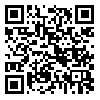Volume 81, Issue 11 (February 2024)
Tehran Univ Med J 2024, 81(11): 899-908 |
Back to browse issues page
Download citation:
BibTeX | RIS | EndNote | Medlars | ProCite | Reference Manager | RefWorks
Send citation to:



BibTeX | RIS | EndNote | Medlars | ProCite | Reference Manager | RefWorks
Send citation to:
Mehryar H, Atabaki P, Riyahi A, Amiri Nikpour M R. Evaluation of obstacles to receive tissue plasminogen activator in patients with acute ischemic stroke in Imam Khomeini Hospital of Urmia. Tehran Univ Med J 2024; 81 (11) :899-908
URL: http://tumj.tums.ac.ir/article-1-12891-en.html
URL: http://tumj.tums.ac.ir/article-1-12891-en.html
1- Department of Emergency Medicine, Faculty of Medicine, Urmia University of Medical Sciences, Urmia, Iran.
2- Department of Neurological Diseases, Faculty of Medicine, Urmia University of Medical Sciences, Urmia, Iran.
2- Department of Neurological Diseases, Faculty of Medicine, Urmia University of Medical Sciences, Urmia, Iran.
Abstract: (169 Views)
Background: The emergence of thrombolytic drugs has opened new horizons in the treatment of patients with acute ischemic stroke, and this study was conducted with the aim of evaluating the barriers of receiving tissue plasminogen activator in patients with acute ischemic stroke in Imam Khomeini Hospital of Urmia.
Methods: This descriptive-analytical, cross-sectional study was conducted from April 21, 2015 to March 19, 2016 on patients with acute ischemic stroke referred to the emergency department of Imam Khomeini Hospital in Urmia using census sampling method. To collect data, a checklist containing demographic information was used. After collecting the data, it was entered into SPSS 18 and analyzed with the help of descriptive statistics.
Methods: This descriptive-analytical, cross-sectional study was conducted from April 21, 2015 to March 19, 2016 on patients with acute ischemic stroke referred to the emergency department of Imam Khomeini Hospital in Urmia using census sampling method. To collect data, a checklist containing demographic information was used. After collecting the data, it was entered into SPSS 18 and analyzed with the help of descriptive statistics.
| Results: In this study, the results showed that out of 100 patients, most of the participants were male (58%)58 and the rest were female, and the average age was 63.71±17.3 years, and 86% were in the age range of 18-80 years, which was the appropriate age to receive or thrombolytics. and the rest were over 80 years old. The fastest visit time was 25 minutes and the latest was 10080 minutes (168 hours). Among these 40 people, only four people (40%) were in the golden time period of thrombolytic drug, i.e. Three hours from the onset of symptoms to the final evaluation. Among the four people who were placed in the golden time, in 50% of the cases there was a history of taking anticoagulants, in 25% a history of head injury, in 50% of the blood sugar less than 50 and finally 1 person (25% of the people placed in the golden time) that is, 1% of all patients were eligible to receive rtPA. About 24% of patients had NIHSS<4 and 2% had NIHSS>25, and the average number obtained was 10. Conclusion: The most important obstacle in the timely initiation of thrombolytic therapy is the delay in visiting the emergency room. Therefore, public education in order to improve the level of general awareness of the society can be effective in reducing this time delay. |
Type of Study: Original Article |
| Rights and permissions | |
 |
This work is licensed under a Creative Commons Attribution-NonCommercial 4.0 International License. |





